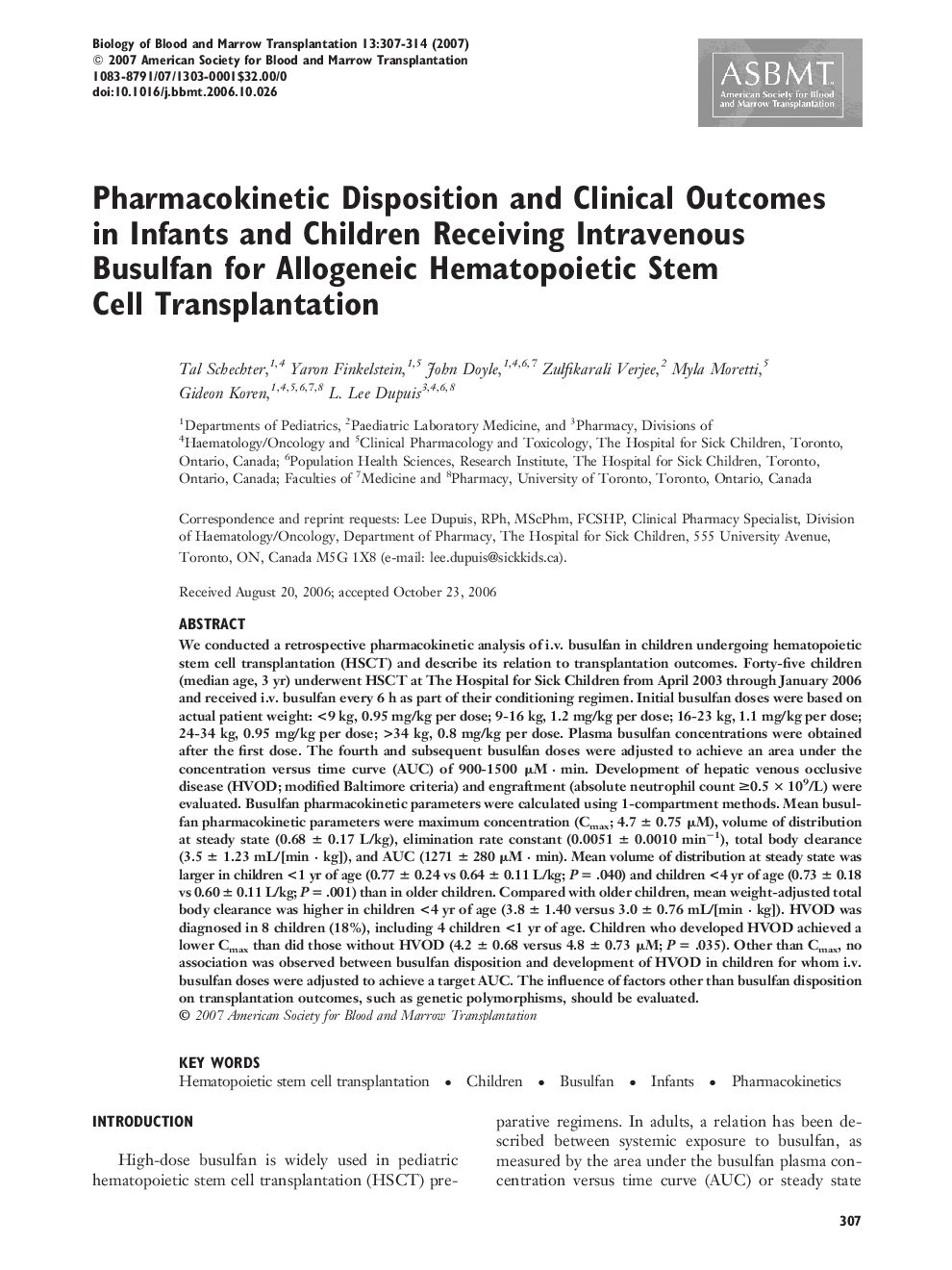| کد مقاله | کد نشریه | سال انتشار | مقاله انگلیسی | نسخه تمام متن |
|---|---|---|---|---|
| 2104519 | 1546380 | 2007 | 8 صفحه PDF | دانلود رایگان |

We conducted a retrospective pharmacokinetic analysis of i.v. busulfan in children undergoing hematopoietic stem cell transplantation (HSCT) and describe its relation to transplantation outcomes. Forty-five children (median age, 3 yr) underwent HSCT at The Hospital for Sick Children from April 2003 through January 2006 and received i.v. busulfan every 6 h as part of their conditioning regimen. Initial busulfan doses were based on actual patient weight: <9 kg, 0.95 mg/kg per dose; 9-16 kg, 1.2 mg/kg per dose; 16-23 kg, 1.1 mg/kg per dose; 24-34 kg, 0.95 mg/kg per dose; >34 kg, 0.8 mg/kg per dose. Plasma busulfan concentrations were obtained after the first dose. The fourth and subsequent busulfan doses were adjusted to achieve an area under the concentration versus time curve (AUC) of 900-1500 μM · min. Development of hepatic venous occlusive disease (HVOD; modified Baltimore criteria) and engraftment (absolute neutrophil count ≥0.5 × 109/L) were evaluated. Busulfan pharmacokinetic parameters were calculated using 1-compartment methods. Mean busulfan pharmacokinetic parameters were maximum concentration (Cmax; 4.7 ± 0.75 μM), volume of distribution at steady state (0.68 ± 0.17 L/kg), elimination rate constant (0.0051 ± 0.0010 min−1), total body clearance (3.5 ± 1.23 mL/[min · kg]), and AUC (1271 ± 280 μM · min). Mean volume of distribution at steady state was larger in children <1 yr of age (0.77 ± 0.24 vs 0.64 ± 0.11 L/kg; P = .040) and children <4 yr of age (0.73 ± 0.18 vs 0.60 ± 0.11 L/kg; P = .001) than in older children. Compared with older children, mean weight-adjusted total body clearance was higher in children <4 yr of age (3.8 ± 1.40 versus 3.0 ± 0.76 mL/[min · kg]). HVOD was diagnosed in 8 children (18%), including 4 children <1 yr of age. Children who developed HVOD achieved a lower Cmax than did those without HVOD (4.2 ± 0.68 versus 4.8 ± 0.73 μM; P = .035). Other than Cmax, no association was observed between busulfan disposition and development of HVOD in children for whom i.v. busulfan doses were adjusted to achieve a target AUC. The influence of factors other than busulfan disposition on transplantation outcomes, such as genetic polymorphisms, should be evaluated.
Journal: - Volume 13, Issue 3, March 2007, Pages 307–314